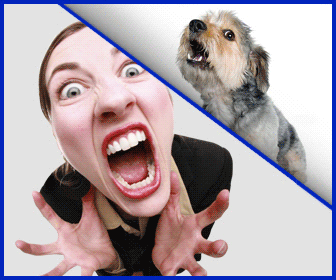Canine Cancer – What You Can Do To Protect Your Dog
Canine Cancer – What You Can Do To Protect Your Dog
Cancer is an unfortunate reality that many people with dogs must face. The scary truth is, the disease is quite common in pups.
The Flint Animal Cancer Center at Colorado State University projects one in four dogs will experience the disease. Dog cancer is a serious issue facing all dog lovers.
In simple terms, cancer is a disease where some of the body’s cells divide without stopping and spread into the surrounding areas of the body. Cancers can form solid tumors, which are masses of tissue. The tumors are malignant and can invade nearby tissue, or spread throughout the body, traveling via blood. Cancer is equally life-threatening to both dogs and humans. That’s why it is important to learn about the disease and monitor your dog’s health.
Signs and Symptoms of Canine Cancers
The Flint Animal Cancer Center found that cancer is the leading cause of death in dogs, with as much as 50% of pups dying fro the disease. Similar to humans, early detection is important so treatment can get started before the cancer has a chance to spread throughout the body. Keep in mind possible signs of cancer don’t immediately indicate cancer, but they’re definitely a reason to get to the vet:
- Collapsing – If your dog is weak, lethargic, or frequently collapsing, make an appointment to see the doctor immediately. “I see this particularly in large breed dogs—even if they fall down and seem better the next day, bring them in because it could signal a tumor of the spleen,” Dr. Jake Zaidel, DVM, of Malta Animal Hospital told Reader’s Digest.
- Unusual lumps and bumps – Cancer can cause tumors to build inside your pup’s body. Abnormal lumps or swellings that persist or grow are a symptom of cancer and should be checked out.
- Abnormal discharges – Bleeding, vomiting, diarrhea, or having any other types of unusual discharge are signs something is amiss. Ask your doctor for their input.
- Weight loss/lack of appetite – If your pup was once a voracious eater and suddenly isn’t hungry and starts to shed pounds, it could be a sign of illness.
- Trouble breathing, urinating, defecating, eating, or swallowing – When common daily behaviors become a struggle, it could be a symptom of the disease.
- Pain – Watch to see if your dog becomes more sensitive to touch. Your pup might also limp (although this can be a signal of arthritic issues or joint or muscle diseases) when playing, walking, or running.
Common Types of Dog Cancer
Cancer is most prevalent in senior dogs. The American Kennel Club’s Canine Health Foundation estimates one-third of dogs over seven will experience cancer in their life. Cancer comes in all types like carcinoma, sarcoma, melanoma, lymphoma, and leukemia. It can occur at any age, to purebreds or mixed breeds.
According to the American Animal Hospital Association, these are the six more common types of cancer in dogs:
- Lymphoma. This cancer occurs in cells in the lymph nodes or bone marrow. It is most often diagnosed in dogs 6 to 9 years old. It affects the dog’s immune system and can spread rapidly. One of the first signs of lymphoma is often painless, swollen lymph node in the neck, or behind the knees.
- Hemangiosarcoma. This is a cancer of the blood vessels. It is most commonly seen in a dog’s spleen, liver, and heart. Hemangiosarcoma is often found large breeds like German Shepherds and Golden Retrievers.
- Mast cell tumors. The first sign of this cancer is typically a lesion on the skin. Mast cell tumors are an extremely common form of cancer in older dogs and mixed breeds. It is also prevalent in Boxers, Boston terriers, Labrador retrievers, beagles, and Schnauzers.
- Melanoma. Skin cancer is sometimes found in a dog’s nail beds, footpads, and eyes. However, the majority of these aggressive tumors start in the mouth or around the lips. One symptom of melanoma is a swollen paw, an eye that drains, or a sore close to or in the mouth.
- Osteosarcoma. This is bone cancer. It often affects large breeds between 4 and 7 years old. Some of the most commonly impacted pups are Great Danes, Irish Setters, Doberman Pinschers, Rottweilers, German Shepherds, and Golden Retrievers.
- Mammary cancer. The American College of Veterinary Surgeons (ACVS) says mammary tumors are more common in female dogs that are either not spayed or were spayed after two years old. A symptom of this cancer is a small nodule on or around the dog’s nipple or a painful tumor around the nipple.
Prevention
As with any type of cancer, the best way to beat it is early detection. Be mindful of changes in your dog’s behavior. If you notice abnormalities, do not wait to call your vet. Unfortunately, there aren’t clinical trials or statistical studies that prove you can prevent cancer in at-risk dogs. Stacey Hershman, DVM, a holistic housecall veterinarian told
Whole Dog Journal, “But common sense and clinical experience make a strong case for avoiding anything that exposes an animal to known carcinogens or weakens the immune system.”
The best prevention is giving your dog a healthy lifestyle. Make sure your pup eats the right foods, gets enough exercise, breathes clean air, drinks clean water, and stays away from harmful substances. Poor oral hygiene has also been linked to some cancers, so be sure to keep your pup’s teeth clean.
Treatment and Costs
There are many different types of cancer treatments for dogs. Some of them are:
- Surgery
- Radiotherapy
- Systemic chemotherapy
- Anti-inflammatory drugs
- Immunotherapy
Researchers are also developing new drugs to heal dogs. For example, the Yale School of Medicine developed a new vaccine that may treat canine cancer. They are working with the Veterinary Cancer Center to test the vaccine on patients.
All those treatments sound expensive, right? There’s no way around it, treatment incurs a cost. We can’t provide you with a definite number, but here are some estimates provided by the National Canine Cancer Foundation. “An initial visit to confirm a cancer diagnosis can be upwards of $200. Major surgery….can start at $1,500. Chemotherapy treatments might range from $200 to $2,000. Radiation therapy can range from $2,000 to $6,000 or higher. You’ll also need to factor in additional medications that might be needed—such as pain relievers or antibiotics—which could cost another $30 to $50 per month for an indefinite period.”
Early Detection Is Key
The most important advice is this: know your dog’s regular behavior. If you notice changes or the symptoms mentioned above, it’s time to talk to the doctor. Do not delay.






